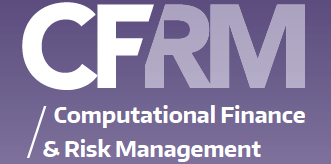Futures are standardized exchange-traded bilateral contracts of agreement to buy or sell an asset at a pre-determined price at a pre-specified time in the future. At the Chicago Mercantile Exchange (CME), futures trading volume averages over 15 million contracts per day.
Managed futures portfolios play an integral role in hedge funds and alternative investments, with hundreds of billions under management. These investments are managed by professional investment individuals or management companies known as Commodity Trading Advisors (CTAs), and typically involve trading futures on commodities, currencies, interest rates, and other assets. This class of assets has averaged over US$300 billion annually during 2011–2020.
One appeal of managed futures strategies is their advertised potential to produce uncorrelated and superior returns, as well as different risk-return profiles, compared to the equity market. The classes of strategies are conceivably diverse among managed futures funds, with the popular ones being long-short strategy and momentum strategy.
In our new paper, we discuss a new approach to generate dynamic futures trading strategies under a general Gaussian framework where the underlying asset’s log price is modeled by a multifactor diffusion process. Our framework is very general and able to capture different forms of futures curves, such as contango and backwardation. It also encapsulates some famous two-factor models, like the Schwartz (1997) model and Central Tendency Ornstein-Uhlenbeck (CTOU) model.
We first derive the no-arbitrage prices and historical price dynamics of the futures contracts. The optimal futures trading strategy is determined by solving a stochastic control problem. Our portfolio optimization approach allows for trading different numbers of futures. By analyzing and solving the associated Hamilton-Jacobi-Bellman (HJB) equations, we present the value function and optimal trading strategies explicitly.
In order to quantify the value of the futures trading opportunity, we define the portfolio manager’s certainty equivalent. Intuitively, it should be more beneficial to be able to trade a larger set of securities. Using certainty equivalent, we quantify the value of trading different sets of futures and show that the highest certainty equivalent is achieved from trading all available contracts.
We apply our stochastic framework to the Schwartz model and CTOU model. In addition, we introduce a new multiscale CTOU model that is driven by a fast and slow mean-reverting process. We provide numerical examples to examine model parameters for our new model.
One challenge in the empirical estimation of multifactor models is that some factors are not directly observable. To address this issue, a popular approach is to apply Kalman filter. This is facilitated by the fact that, under the multifactor Gaussian model, the log-futures price is an affine function of all the state variables.
The full paper is available for download here.
References
T. Leung and Y. Zhou (2021), Optimal Dynamic Futures Portfolio Under a Multifactor Gaussian Framework [pdf], International Journal of Theoretical & Applied Finance
T. Leung and Y. Zhou (2021), Optimal Dynamic Futures Portfolios Under a Multiscale Central Tendency Ornstein-Uhlenbeck Model [pdf], in the Proceedings of the American Control Conference 2021
Google Scholar // Linkedin Page // Homepage
Disclosure: Interactive Brokers Third Party
Information posted on IBKR Campus that is provided by third-parties does NOT constitute a recommendation that you should contract for the services of that third party. Third-party participants who contribute to IBKR Campus are independent of Interactive Brokers and Interactive Brokers does not make any representations or warranties concerning the services offered, their past or future performance, or the accuracy of the information provided by the third party. Past performance is no guarantee of future results.
This material is from Computational Finance & Risk Management, University of Washington and is being posted with its permission. The views expressed in this material are solely those of the author and/or Computational Finance & Risk Management, University of Washington and Interactive Brokers is not endorsing or recommending any investment or trading discussed in the material. This material is not and should not be construed as an offer to buy or sell any security. It should not be construed as research or investment advice or a recommendation to buy, sell or hold any security or commodity. This material does not and is not intended to take into account the particular financial conditions, investment objectives or requirements of individual customers. Before acting on this material, you should consider whether it is suitable for your particular circumstances and, as necessary, seek professional advice.
Disclosure: Hedge Funds
Hedge Funds are highly speculative, and investors may lose their entire investment.
Disclosure: Forex
There is a substantial risk of loss in foreign exchange trading. The settlement date of foreign exchange trades can vary due to time zone differences and bank holidays. When trading across foreign exchange markets, this may necessitate borrowing funds to settle foreign exchange trades. The interest rate on borrowed funds must be considered when computing the cost of trades across multiple markets.
Disclosure: Margin Trading
Trading on margin is only for experienced investors with high risk tolerance. You may lose more than your initial investment. For additional information regarding margin loan rates, see ibkr.com/interest
Disclosure: Futures Trading
Futures are not suitable for all investors. The amount you may lose may be greater than your initial investment. Before trading futures, please read the CFTC Risk Disclosure. A copy and additional information are available at ibkr.com.
















Join The Conversation
For specific platform feedback and suggestions, please submit it directly to our team using these instructions.
If you have an account-specific question or concern, please reach out to Client Services.
We encourage you to look through our FAQs before posting. Your question may already be covered!